




Related bibliographies:
Reptiles
 Snakes Snakes
 Colubridae Colubridae
Asia
Europe
Malay Archipelago
Middle East






































































































































































































































































































































| |

Bibliography of the genus
Elaphe (Palearctic-Oriental Rat Snakes)

(Reptilia: Serpentes: Colubridae)
Note:
In order to limit redundancy, relevant literature indexed in the related bibliographies in the left column may not have been included in this page. For a comprehensive search of literature, these bibliographies should therefore also be consulted.
Elaphe in general
 |
Allen, R. 1987. The rat snakes. ASRA (Association for the Study of Reptilia and Amphibia) Monographs 2(1): 28-35.
Borzée, A.; Kim, J.Y.; Jang, Y. 2016. Kaloula borealis (Boreal Digging Toad). Habitat use. Herpetological Review 47(1): 112.
Brand, L. 1982. [Snakes of the genus Elaphe]. (In Dutch). Lacerta 40(10-11): 254-257.
Chen, X.; Lemmon, A.R.; Lemmon, E.M.; Pyron, R.A.; Burbrink, F.T. 2017. Using phylogenomics to understand the link between biogeographic origins and regional diversification in ratsnakes. Molecular Phylogenetics and Evolution 111: 206-218.
Conner, R.N.; Saenz, D.; Rudolph, D.C. 2004. The red-cockaded woodpecker: interactions with fire, snags, fungi, rat snakes and pileated woodpeckers. Texas Journal of Science 56(4): 415-426.
Coote, J. 1977. Temperature requirements for Lampropeltis and Elaphe. Herptile 2(3): 4-6.
Dowling, H.G. 1952. A taxonomic study of the ratsnakes, genus Elaphe. 4. A checklist of the American forms. Occasional Papers of the Museum of Zoology University of Michigan 541: 1-12.
Dowling, H.G. 1958. A taxonimic study of the ratsnakes. 6. Validation of the genera Gonyosoma Wagler and Elaphe Fitzinger. Copeia 1958: 29-40.
Dowling, H.G. 1959. Rattles and hisses and rasping scales. Animal Kingdom 62: 140-142.
Gentilli, A.; Razzetti, E.; Bonini, L. 1999. Tail display in two European snakes of the genus Elaphe Fitzinger, 1833 (Reptilia, Colubridae). pp. 129-131. In: Miaud, C. & Guyetant, R. (eds.). Current studies in herpetology: proceedings of the 9th Ordinardy General Meeting of the Societas Europaea Herpetologica 25-29 August 1998, Le Bourget du Lac, France. Societas Europaea Herpetologica, Le Bourget du Lac, 478 pp.
Goris, R.C. 1983. [Captive reproduction: successes and failures (abstract)]. (In Japanese). Japanese Journal of Herpetology 10(2): 58.
Gumprecht, A. 2003. Anmerkungen zu den Chinesischen Kletternattern der Gattung Elaphe (sensu lato) Fitzinger, 1833. Reptilia (D) 8(44): 37-41.
Helfenberger, N. 2001. Phylogenetic relationships of Old World ratsnakes based on visceral organ topography, osteology, and allozyme variation. Russian Journal of Herpetology 8(Supplement): 1-62.
Helfenberger, N.; Schulz, K.D. 2013. A checklist of the extinct taxa allied to the Old World ratsnakes, with remarks on the phylogeny and radiation of Elaphe, Rhinechis and Zamenis. pp. 423-427. In: Schulz, K.D. (ed.). Old World ratsnakes: a collection of papers. Bushmaster Publications, Berg. 432 pp.
Hoser, R.T. 2012. A taxonomic revision of the Colubrinae genera Zamenis and Orthriophis with the creation of two new genera (Serpentes: Colubridae). Australasian Journal of Herpetology 11: 59-64.
Hubbs, C.L. 1932. The use of the generic name Ophis for an eel, a snake and a mollusc. Copeia 1932: 26-27.
Ingen, E.J. van 1982. Rat snake seizing baby muntjac. Journal of the Bombay Natural History Society 79(1): 209.
International Commission on Zoological Nomenclature 1957. Opinion 490. Action under the Plenary Powers to preserve for use in its accustomed sense the generic name "Elaphe" Fitzinger, 1833 (Class Reptilia). Opinions of the International Commission on Zoological Nomenclature 17(12): 179-196.
Langhammer, J. 1963. Care of the ratsnake genus Elaphe. Bulletin of the Philadelphia Herpetological Society 10(4) [1962]: 33-34.
Lenk, P.; Joger, U.; Wink, M. 2001. Phylogenetic relationships among European ratsnakes of the genus Elaphe Fitzinger based on mitochondrial DNA sequence comparisons. Amphibia-Reptilia 22(3): 329-339.
Ling, C.; Liu, S.Y.; Huang, S.; Burbrink, F.T.; Guo, P.; Sun, Z.Y.; Zhao, J. 2010. Phylogenetic analyses reveal a unique species of Elaphe (Serpentes, Colubridae) new to science. Asian Herpetological Research 1(2): 90-96.
Mertens, R. 1965. Elaphe Fitzinger 1833, nicht Elaphis Bonaparte 1831 (Reptilia, Serpentes). Senckenbergiana Biologica 46(3): 193-194.
Mori, A. 1994. Prey-handling behaviour of newly hatched snakes in two species of the genus Elaphe with comparison to adult behaviour. Ethology 97(3): 198-214.
O'Shea, M. 2004. More ratsnake revelations. Herptile 29(4): 143-156.
Peters, W.C.H. 1868. Über neue Säugethiere (Colobus, Rhinolophus, Vesperus) und neue oder weniger bekannte Amphibien (Hemidactylus, Herpetodryas, Spilotes, Elaphis, Lamprophis, Erythrolamprus). Monatsberichte der Königlich Akademie der Wissenschaften zu Berlin 1868(December): 637-642.
Schulz, K.D. 1996. A monograph of the colubrid snakes of the genus Elaphe Fitzinger. Koeltz Scientific, Würselen. 439 pp.
Sideleva, O.; Ananjeva, N.B.; Ryabov, S.; Orlov, N.L. 2003. The comparison of morphological and molecular characters inheritance in family groups of rat snakes of Elaphe genus (Serpentes: Colubridae). Russian Journal of Herpetology 10(2): 149-156.
Smith, T. 2003. Phylogenetic relationships of old world ratsnakes based on visceral organ topography, osteology and allozyme variation. Taxonomic changes in the genus Elaphe. Herptile 28(3): 122-126.
Utiger, U.; Helfenberger, N.; Schätti, B.; Schmidt, C.; Ruf, M.; Ziswiler, V. 2002. Molecular systematics and phylogeny of Old and New World ratsnakes, Elaphe auct., and related genera (Reptilia, Squamata, Colubridae). Russian Journal of Herpetology 9(2): 105-124.
Werb, K. 1981. Comments on winter fasting in captive European snakes of the genus Elaphe. British Herpetological Society Bulletin 3: 47.
Werning, H. 2003. Neue Namen - alte Nattern: Zur aktuellen Taxonomie der Kletternattern (Elaphe sensu lato). Reptilia (D) 8(43): 6-8.
Wright, D. 1987. European species of the colubrid genera Coluber, Coronella, Elaphe, Malpolon, and Natrix. pp. 57-58. In: Welch, K.R. Handbook on the maintenance of reptiles in captivity. Krieger, Florida. 156 pp.
Zhang, F. 1988. Preliminary studies on the phylogeny of Elaphe, Zoocys [Zaocys], Ptyas and Entechinus. Acta Herpetologica Sinica 1988(2): 103-111.
Zhang, F. 1988. Studies on the cranial morphology of Zaocys (Serpentes: Colubridae) 5. A comparative study of the cranial morphology of Chinese Zaocys, Ptyas, Elaphe and Entechinus, with preliminary discussions on the function and phylogeny. Acta Herpetologica Sinica 1988(1): 47-55.
|
Elaphe bimaculata
 |
Bartz, H. 1989. Keeping and breeding Elaphe bimaculata. Litteratura Serpentium (English Edition) 9(6): 277-280.
Bartz, H.; Scheidt, V. 1989. Care and breeding of the Chinese twin-spotted ratsnake Elaphe bimaculata. Vivarium (Lakeside) 2(2): 8-10.
Fang, R.; Wang, T. 1983. Three new records of snakes from Shaanxi. Acta Herpetologica Sinica 2(2): 75-76.
Gillissen, F. 1996. Breeding results. Elaphe bimaculata. Litteratura Serpentium (English Edition) 16(2): 53.
Guo, C.; Fan, L. 1997. New records of snakes from Shanxi Province. (In Chinese, English summary). Chinese Journal of Zoology 32(4): 41.
Hingley, K. 1989. Notes on the oviposition and the succesful[sic] incubation of eggs of Elaphe bimaculata - a Chinese ratsnake. Herptile 14(1): 1-3, 19.
Hingley, K.J. 1988. Early experiences with the red coin ratsnake, Elaphe bimaculata, in the vivarium. Snake Keeper 2(9): 4-5.
Jia, S.B.; Jia, L.; Yan, H.C.; Zhang, J.B.; Wang, C.; Cheng, B.; Miao, X.L. 2010. [Distribution patterns of snakes in western Shandong Province]. (In Chinese). Sichuan Journal of Zoology 29(1): 78-80.
Langeveld, C.M. 1995. The Chinese Leopard Snake, Elaphe bimaculata (K.P. Schmidt, 1925). An easy snake to keep. Litteratura Serpentium (English Edition) 15(4): 82-88.
Ma, L.; Zhao, Y.Z.; Gao, Y.; Cai, T.L.; Wang, N.; Sui, J.L.; Wu, J.G.; Jiang, W.J. 2012. [Survey of amphibians and reptiles resources in Songshan Nature Reserve, Beijing]. (In Chinese). Sichuan Journal of Zoology 31(2): 307-310.
Moriguchi, H.; Toriba, M.; Miyata, H.; Sakai, A.; Sugano, H. 1982. Notes on reproductions of captive snakes observed in the Japan Snake Institute during the years 1980-1981. The Snake 14(1): 57-60.
Petch, S. 1990. A case of twins from a single egg in the Chinese ratsnake Elaphe bimaculata. Herptile 15(1): 13-16.
Pewtress, R. 1990. Captive breeding of the twin-spotted ratsnake, Elaphe bimaculata. Thames and Chiltern Herpetological Group Newsletter 108: 7.
Pewtress, R.K. 2001. Even further observations on keeping and breeding the twin-spot ratsnake, Elaphe bimaculata. Rekindling the fire. Herptile 26(4): 156-160.
Schulz, K.D. 1986. Die hinterasiatischen kletternattern der Gattung Elaphe. 5. Elaphe bimaculata (Schmidt, 1925). Sauria (Berlin) 8(2): 23-26.
Schulz, K.D. 1988. Asian rat snakes of the Elaphe genus. 5. Elaphe bimaculata (Schmidt, 1925). Snake Keeper 2(6): 11-14.
Smith, L. 1992. Reproductive husbandry of the Chinese ratsnake Elaphe bimaculata. Thames and Chiltern Herpetological Group Newsletter 133: 7-9.
Smith, L. 1993. Reproductive husbandry of the Chinese ratsnake Elaphe bimaculata. ASRA (Association for the Study of Reptilia and Amphibia) Journal 1993: 32-35.
Werner, F. 1926. Synonymisches über Schlangen von Hainan und vom chinesischen Festland. Zoologischer Anzeiger 67: 141-144.
Wu, Y.; Zhang, H.L.; Hao, Y.; Liu, S.; Kang, X. 1998. A specimen of abnormal Elaphe bimaculata. (In Chinese, English summary). Hebei Shifan Daxue Xuebau Ziran Kexue Ban 22(2): 267, 275.
Yu, S. 1997. Observation on the lung capillaries of Elaphe bimaculata. Chinese Journal of Zoology 32(5): 19-20.
Zhang, L.J.; Bao, W.D. 2010. [A new record of snake in Inner Mongolia: Elaphe bimaculata]. (In Chinese). Chinese Journal of Zoology 45(3): 168-169.
|
Elaphe cantoris
 |
Ahmed, S.; Dasgupta, G. 1992. Reptilia. pp. 1-65. In: Ghosh, A.K. (ed.). Fauna of West Bengal. Part 2 (Reptilia, Amphibia, fishes, Hemichordata and archaeozoology). Zoological Survey of India, Calcutta. 381 pp.
Hobcroft, D.; Schulz, K.D. 2010. Erstnachweis von Orthriophis cantoris (Boulenger, 1894) in Bhutan. Sauria (Berlin) 32(2): 56.
Mitra, A. 2009. New records of snakes from district Trashigang, eastern Bhutan. Bioscan 4(1): 15-20.
Schulz, K.D. 1990. Die hinterasiatischen Kletternattern der Gattung Elaphe. 19. Elaphe cantoris (Cantor 1839). Sauria (Berlin) 12(3): 19-20.
|
Elaphe carinata
 |
Chapman, G. 1984. Elaphe carinata. Litteratura Serpentium 4(1): 16-20.
Dixon, J.R. 1995. Comments on the proposed conservation of the specific name of Phyllophis carinata Gunther, 1864 (Reptilia, Serpentes). Bulletin of Zoological Nomenclature 52(4): 345.
Dowling, H.G. 1959. Egg-eating adaptations in the Chinese ratsnake, Elaphe carinata Gunther. Copeia 1959(1): 68-69.
Gao, W. 1987. A new record of the snakes of Beijing - Elaphe carinata. Acta Herpetologica Sinica 6(2): 75.
Goode, M. 1988. Life history notes: Elaphe carinata (Keeled Rat Snake). Reproduction. Herpetological Review 19(4): 84.
Gumprecht, A. 2004. Die Königskletternatter - Elaphe carinata. Natur und Tier-Verlag, Münster. 62 pp.
Guo, C.; Fan, L. 1997. New records of snakes from Shanxi Province. (In Chinese, English summary). Chinese Journal of Zoology 32(4): 41.
Guo, P.; Liu, Q.; Myers, E.A.; Liu, S.; Xu, Y.; Liu, Y.; Wang, Y. 2012. Evaluation of the validity of the ratsnake subspecies Elaphe carinata deqenensis (Serpent: Colubridae). Asian Herpetological Research 3(3): 219-226.
Heimes, P. 1996. Die Amphibien und Reptilien Pekings. 2. Schildkröten und Schlangen. Herpetofauna (Weinstadt) 18(105): 27-34.
Hikida, T. 1995. Comments on the proposed conservation of the specific name of Phyllophis carinata Gunther, 1864 (Reptilia, Serpentes). Bulletin of Zoological Nomenclature 52(4): 345-346.
Huang, W. 1997. Sexual size dimorphism in seven species of colubrid snakes in Taiwan. Bulletin of the National Museum of Natural Science (Taichung) 9: 107-116.
Huang, W.S.; Wang, H. 2009. Predation risks and anti-predation parental care behavior: an experimental study in a tropical skink. Ethology 115(3): 273-279.
International Commission on Zoological Nomenclature 1997. Opinion 1867. Phyllophis carinata Gunther, 1864 (currently Elaphe carinata; Reptilia, Serpentes): specific name conserved. Bulletin of Zoological Nomenclature 54(1): 75-76.
Ji, X.; Du, W.G. 2001. The effects of thermal and hydric environments on hatching success, embryonic use of energy and hatchling traits in a colubrid snake, Elaphe carinata. Comparative Biochemistry and Physiology A Molecular and Integrative Physiology 129A(2-3): 461-471.
Ji, X.; Du, W.G.; Li, H.; Lin, L.H. 2006. Experimentally reducing clutch size reveals a fixed upper limit to egg size in snakes, evidence from the king ratsnake, Elaphe carinata. Comparative Biochemistry and Physiology A Molecular and Integrative Physiology 144(4): 474-478.
Ji, X.; Sun, P.Y.; Fu, S.Y.; Zhang, H.S. 1997. Utilization of energy and nutrients in incubating eggs and post-hatching yolk in a colubrid snake, Elaphe carinata. Herpetological Journal 7(1): 7-12.
Lu, Y.Y.; Liu, X.H.; Wang, J.; Li, P.P. 2005. [The keeled ratsnake in Shandong Peninsula]. (In Chinese). Sichuan Journal of Zoology 24(3): 281-282.
Mao, S.H. 1962. Partial albinism and absence of frontal shield in a Taiwan keeled snake, Elaphe carinata (Gunther). Bull. Inst. Zool. Academia Sinica 1: 129-130.
Mayo, J.J.; Lai, Y.C.; Norval, G. 2007. Natural history notes: Elaphe carinata carinata (Keeled Rat Snake). Diet. Herpetological Review 38(2): 206.
Orlov, N.L.; Ryabov, S.A.; Nguyen, V.S.; Nguyen, Q.T. 2003. New records and data on the poorly known snakes of Vietnam. Russian Journal of Herpetology 10(3): 217-240.
Ota, H.; Sakaguchi, N.; Ikehara, S.; Hikida, T. 1993. The herpetofauna of the Senkaku Group, Ryukyu Archipelago. Pacific Science 47(3): 248-255.
Qu, Y.F.; Li, H.; Gao, J.F.; Ji, X. 2011. Geographical variation in reproductive traits and trade-offs between size and number of eggs in the king ratsnake, Elaphe carinata. Biological Journal of the Linnean Society 104(3): 701-709.
Schulz, K.D. 1992. Die hinterasiatischen Kletternattern der Gattung Elaphe. 22. Elaphe carinata (Gunther, 1864). Sauria (Berlin) 14(4): 3-13.
Smith, H.M.; Ota, H.; Wallach, V. 1995. Case 2850. Phyllophis carinata Gunther, 1864 (currently Elaphe carinata; Reptilia, Serpentes): proposed conservation of the specific name. Bulletin of Zoological Nomenclature 52(2): 166-169.
Stemmler, O. 1972. Zur Haltung und Zucht von Elaphe carinata. DATZ (Die Aquarien- und Terrarien-Zeitschrift) 25: 283-286.
Toriba, M. 1996. Comment on the proposed conservation of the specific name of Phyllophis carinata Gunther, 1864 (currently Elaphe carinata; Reptilia, Serpentes). Bulletin of Zoological Nomenclature 53(1): 50.
Wang, D.; Hu, Q.H.; Yang, J.H. 2002. [The reproductive biology of four kinds of economical snakes in a half-wild snake farm]. (In Chinese, English summary). Zhejiang Linxueyuan Xuebao 22(2) (Sum 58): 88-91.
Wang, L.; Liu, Z.S.; Zhai, H.; Han, J.; Liu, Q.X.; Wang, X. 2010. [Species diversity and faunal characteristics of amphibians and reptiles in Helan Mountains]. (In Chinese). Shengtaixue Zazhi 29(11): 2293-2297.
Xu, S.; He, H.Y. 1998. A comparative study on the larynges of ten species of snakes. Zoological Research 19(1): 90-92.
Yu, X.; Li, X.; Huo, Z. 2015. Breeding ecology and success of a reintroduced population of the endangered Crested Ibis Nipponia nippon. Bird Conservation International 25(2): 207-219.
Zhai, H.; Wang, L. 2009. [A new record of snake in Ningxia: Elaphe carinata]. (In Chinese). Sichuan Journal of Zoology 28(2): 277.
Zhang, S.F.; Zhang, S.G. 2002. [Discovery of Elaphe carinata in Rizhao, Shandong Province]. (In Chinese). Chinese Journal of Zoology 37(6): 72.
|
Elaphe climacophora
 |
Choate, L.D. 1963. An albino population of Elaphe climacophora from Iwakuni, Japan. Herpetologica 18: 260-262.
Dieffenbach, C.O.; Emslie, S.G. 1971. Cues influencing the direction of prey ingestion of the Japanese snake, Elaphe climacophora (Colubridae, Serpentes). Herpetologica 27: 461-466.
Fukada, H. 1956. Biological studies on the snakes III. Observations on hatching of Elaphe climacophora (Boie), E. conspicillata (Boie), and Natrix vibakari vibakari (Boie). Bull. Kyoto Gakugei Univ. B. 9: 21-29.
Fukada, H. 1959. About the egg eating habits in Elaphe climacophora (Boie). Bull. Kyoto Gakugei Univ. Ser. B. 14: 29-34.
Fukada, H. 1962. Duplicate feeding habits in a Japanese snake. Bull. Kyoto Gakugei Univ. (B) 20: 19-20.
Fukada, H. 1978. A case of twin hatching in the snake, Elaphe climacophora. Japanese Journal of Herpetology 7(4): 88-91.
Fukada, H. 1978. Growth and maturity of the Japanese rat snake, Elaphe climacophora (Reptilia, Serpentes, Colubridae). Journal of Herpetology 12(3): 269-274.
Fukada, H. 1979. Longevity of a Japanese rat snake in captivity. Japanese Journal of Herpetology 8(2): 56-57.
Fukada, H. 1983. Heart rate-temperature relationship in a Japanese rat snake. Japanese Journal of Herpetology 10(1): 1-6.
Fukada, H. 1989. Body temperatures of snakes in the fields. 2. Rhabdophis tigrinus, Elaphe climacophora, Amphiesma vibakari, and Elaphe conspicillata. Japanese Journal of Herpetology 13(2): 29-34.
Fukada, H. 1989. Longevity of four species of Japanese snakes. pp. 375-380. In: Matsui, M., Hikida, T. & Goris, R.C. (eds.). Current herpetology in East Asia. Proceedings of the second Japan-China Herpetological Symposium, Kyoto, July 1988. Herpetological Society of Japan, Kyoto. 521 pp.
Gans, C.; Oshima, M. 1952. Adaptations for egg eating in the snake Elaphe climacophora (Boie). American Museum Novitates 1571: 1-16.
Gans, C.; Oshima, M. 1952. Adaptions for egg eating in the snake Elaphe climacophora. American Museum Novitates 1571: 1-16.
Hadley, W.F.; Gans, C. 1972. Convergent ontogenetic change of color pattern in Elaphe climacophora (Colubridae: Reptilia). Journal of Herpetology 6(1): 75-78.
Hirakawa, H.; Fukui, D. 2008. Predation by a rat snake (Elaphe climacophora) on a foliage-roosting bat (Murina ussuriensis) in Japan. Bat Research News 49(2): 37-39.
Iwasaki, S.I.; Yoshizawa, H.; Kawahara, I. 1996. Three-dimensional structure of the surface of the tongue of the Rat Snake, Elaphe climacophora. Anatomical Record 245(1): 9-12.
Kameda, K. 1994. Identification of nest predators of the rufous turtle dove Streptopelia orientalis by video tape recording. Japanese Journal of Ornithology 43(1): 29-31.
Kano, T.; Sato, T.; Kobayashi, R.; Ishiguro, A. 2012. Local reflexive mechanisms essential for snakes' scaffold-based locomotion. Bioinspiration & Biomimetics 7(4): 10.
Kawabe, M. 1997. Aodaishoh's counterattack against common buzzard's attack. (In Japanese, English summary). Bulletin of the Higashi Taisetsu Museum of Natural History 19: 55-56.
Kobayashi, T. 1987. Does the Siberian chipmunk respond to the snake by identifying it? Journal of Ethology 5(2): 137-144.
Kobayashi, T. 1996. The biological function of snake mobbing by Siberian chipmunks: 2. Functions beneficial for the mobbers themselves. Journal of Ethology 14(1): 9-13.
Kuwabara, M.; Kaneko, M.; Kinoshita, H.; Kumakura, M. 2006. [Animals observed in Tuat University forests between 1960-2005]. (In Japanese). Firudo Saiensu 5: 43-50.
Mishima, S.; Sawai, Y.; Yamasato, S.; Sawai, K. 1977. Studies on a natural monument, shirohebi (albino Elaphe climacophora) on the Iwakuni in Japan. 3. Observation on copulation, egg-laying and hatching of the shirohebi (1). The Snake 9(1): 14-26.
Mishima, S.; Sawai, Y.; Yamasato, S.; Toriba, M.; Sawai, K. 1976. Studies on a natural monument, shirohebi (albino Elaphe climacophora) on the Iwakuni in Japan. 1. study on the captive breeding of the snakes, young shirohebi. The Snake 8(1): 69-77.
Mishima, S.; Sawai, Y.; Yamasato, S.; Toriba, M.; Sawai, K. 1977. Studies on a natural monument, shirohebi (albino Elaphe climacophora) on the Iwakuni in Japan. 2. Study on the captive breeding of the snakes, young shirohebi (2). The Snake 8(2): 121-144.
Mori, A. 1994. Ecological and morphological characteristics of the Japanese Rat Snake, Elaphe climacophora, on Kammuri-jima Island: a possible case of insular gigantism. The Snake 26(1): 11-18.
Mori, A. 1996. A comparative study of the development of prey handling behavior in young Rat Snakes, Elaphe quadrivirgata and E. climacophora. Herpetologica 52(3): 313-322.
Mori, A.; Toda, M.; Kadowaki, S.; Moriguchi, H. 1992. Lying in ambush for nocturnal frogs: field observations on the feeding behavior of three colubrid snakes, Elaphe quadrivirgata, E. climacophora, and Rhabdophis tigrinus. Japanese Journal of Herpetology 14(3): 107-115.
Moriguchi, H. 1978. Distances of movements of the snakes Elaphe climacophora and Rhabdophis tigrinus in the field. Japanese Journal of Herpetology 7(4): 105-106.
Moriguchi, H.; Toriba, M. 2001. [An example of Cyanopica cyana (Aves: Corvidae) eating by Elaphe climacophora (Squamata: Colubridae)]. (In Japanese, English summary). Bulletin of the Herpetological Society of Japan 2001(1): 7-8.
Narumi, N. 2002. [Sex identification of snakes with sexing probe-cases in Elaphe climacophora, Elaphe quadrivirgata and Elaphe conspicillata in Hokkaido, Japan]. (In Japanese). Bulletin of the Herpetological Society of Japan 2002(2): 55-58.
Niimi, T. 1965. On a dichotomous snake, Elaphe climacophora (Boie). Acta Herpetologica Japonica 1: 31-32.
Numi, T. 1964. Some observations of the hatching of Elaphe climacophora. Acta Herpetologica Japonica 2: 5-6.
Okamoto, T.; Shintaku, Y. 2009. [An example of predation on the Japanese pipistrelle bat Pipistrellus abramus (Vespertilionidae, Mammalia) by Elaphe climacophora (Colubridae, Serpentes)]. (In Japanese). Bulletin of the Herpetological Society of Japan 2009(2): 137-138.
Orlov, N.L. 1982. Die Fortpflanzung der Pythons P. regius und Liasis mackloti und der Kletternattern Elaphe climacophora und E. quadrivirgata im Terrarium. Herpetofauna (Weinstadt) 4(19): 25-30.
Ota, H.; Nakagawa, H. 1985. [Notes on the specimens of reptiles deposited in Shiretoko Museum, Shari, eastern Hokkaido, Japan]. (In Japanese, English summary). Record of Shiretoko Museum 7: 1-6.
Ratnikov, V.Y. 2004. Identification of some eurasian species of Elaphe (Colubridae, Serpentes) on the basis of vertebrae. Russian Journal of Herpetology 11(2): 91-98.
Schulz, K.D. 1985. Die hinterasiatischen Kletternattern der Gattung Elaphe. 2. Elaphe climacophora (Boie, 1826). Sauria (Berlin) 7(3): 7-8.
Schulz, K.D. 1988. Asian rat snakes of the Elaphe genus. 2. Elaphe climacophora (Boie, 1826). Snake Keeper 2(3): 6-7.
Sideleva, O.; Syabov, S.; Ananjeva, N.B.; Smirnova, J. 2003. Inheritance of morphological and molecular characters in family groups of snakes of Elaphe genus. Trudy Zoologicheskogo Instituta 299: 121-130.
Tanaka, Y.; Hirahara, Y. 1995. Spleen of the snake (Elaphe climacophora) and intrasplenic vascular architecture. Journal of Morphology 226(2): 223-235.
Teraoka, S.; Fujita, H. 2010. [Record on large-sized Elaphe climacophora shed shell in Izumo City, Shimane Prefecture]. (In Japanese). Hoshizaki Gurin Zaidan Kenkyu Hokoku 13: 289-290.
Watanabe, M.; Toriba, M.; Sakai, A.; Hirabayashi, K. 1989. A case of long time retention of egg in oviduct of an albino Elaphe climacophora. The Snake 21(2): 113.
|
Elaphe davidi
 |
Boulenger, G.A. 1914. Description of a new snake of the genus Coluber from northern China. Annals and Magazine of Natural History (London) 13: 576.
Heimes, P. 1996. Die Amphibien und Reptilien Pekings. 2. Schildkröten und Schlangen. Herpetofauna (Weinstadt) 18(105): 27-34.
Helfenberger, N.; Schätti, B. 1998. Morphological adaptations for egg-eating in the snake Elaphe davidi Sauvage 1884. Russian Journal of Herpetology 5(1): 36-42.
Liang, G.; Fang, R. 1991. A new record of snakes from Shaanxi - Elaphe davidi (Sauvage). (In Chinese, English summary). Journal of Shaanxi Normal University Natural Science Edition 19(4)(Sum 42): 91-92.
Ma, L.; Zhao, Y.Z.; Gao, Y.; Cai, T.L.; Wang, N.; Sui, J.L.; Wu, J.G.; Jiang, W.J. 2012. [Survey of amphibians and reptiles resources in Songshan Nature Reserve, Beijing]. (In Chinese). Sichuan Journal of Zoology 31(2): 307-310.
Schulz, K.D. 1989. Die hinterasiatischen Kletternattern der Gattung Elaphe. 15. Elaphe davidi (Sauvage 1884). Sauria (Berlin) 11(1): 21-22.
Szyndlar, Z. 1985. Occurrence of Elaphe davidi (Sauvage, 1884) (Serpentes: Colubridae) in the Democratic People's Republic of Korea. The Snake 17(2): 163-167.
Wen, S.; Ji, D. 1997. A study on Elaphe davidi Sauvage of China. (In Chinese. Chinese Journal of Zoology 32(2): 16-19.
|
Elaphe dione
 |
Anonymous. 2014. [The main nest predators of birds breeding in artificial nest-boxes and its influencing factors]. (In Chinese). Acta Ecologica Sinica 34(5): 1235-1243.
Abraham, G. 1984. Elaphe dione. Sauria (Berlin) 6(4): 2.
Aghasyan, A.; Avci, A.; Tuniyev, B.; Crnobrnja-Isailovic, J.; Lymberakis, P.; Andrén, C.; Cogalniceanu, D.; Wilkinson, J.; Ananjeva, N.B.; Üzüm, N.; Orlov, N.L.; Podloucky, R.; Tuniyev, S.; Kaya, U.; Li, P.; Borkin, L.; Milto, K.D.; Golynsky, E. & al. 2017. Elaphe dione. The IUCN Red List of Threatened Species 2017: e.T157275A747623. http://dx.doi.org/10.2305/IUCN.UK.2017-2.RLTS.T157275A747623.en.
Bachkiroff, I. 1935. Elements composant les reliques (survivants) de la faune des monts Gigonli. Bull. Soc. Nat. Moscou Sect. Biol. 44(5): 240-245.
Baybolova, K.T.; Lukyanets, Y.G. 2011. [Color variability of Vipera (Pelias) berus (Linnaeus, 1758) and Elaphe dione (Pallas, 1773) in the limits of Kazakhstan Altai]. (In Russian). Selevinia 2011: 208-210.
Berdibaeva, Z.S. 1982. [Material on biology and importance to farming of Elaphe dione]. pp. 26-27. (In Russian). In: Gvozdev, E.V. (ed.). [The animal world of Kazakhstan and the problems of its conservation]. Nauka, Alma Ata. 211 pp.
Chernikin, I.A. 1981. [On the protection of reptiles in northern Sikhote-Alin]. pp. 125. (In Russian). In: Bromlej, G.F.; Kostenko, V.A.; Yudin, V.G. & Nechaev, V.A. (eds.). [Rare and endangered terrestrial animals of the Far East of the USSR. (Contributions to the conference).]. Akademiya Nauk SSSR, Vladivostok. 192 pp.
Davies, P.M.C. 1965. Notes on six species of snakes collected in central Korea, 1956-57. British Journal of Herpetology 3: 190-194.
Dieckmann, M.; Weyers, A. 2006. Haltung und Nachzucht der chinesischen Dione-Natter (Elaphe dione). Reptilia (D) 11(58): 64-71.
Dieckmann, M.; Weyers, A. 2006. Keeping and breeding the Chinese Dione rat snake Elaphe dione. Reptilia (GB) 47: 70-77.
Dorward, L. 2014. Predation of Elaphe dione (Pallas, 1773) by Dolichophis caspius (Gmelin, 1789) (Squamata: Colubridae). Herpetology Notes 7: 165-166.
Dujsebayeva, T.N.; Malakhov, D.V. 2001. [On the distribution of amphibians and reptiles on the northern coast of Alakol Lake (southeastern Kazakhstan)]. (In Russian, English summary). Selevinia 2001(1-4): 105-111.
Garzoni, J.; Geniez, P.; Nobile, F. 2004. Elaphe dione (Pallas, 1773), a snake taxon new to the Turkish herpetofauna. Herpetozoa 16(3-4): 174-175.
Guo, C. & al. 1997. Reproduction ecology of Elaphe dione in Lishan region. (In Chinese). Sichuan Journal of Zoology 16(1): 39.
Heimes, P. 1996. Die Amphibien und Reptilien Pekings. 2. Schildkröten und Schlangen. Herpetofauna (Weinstadt) 18(105): 27-34.
Hingley, K.J. 1987. Snakes of the genus Elaphe. Their care and breeding in captivity. Part 3. Snake Keeper 1(3): 6-10.
Hofmann, S.; Fritzsche, P.; Miehe, G. 2016. A new record of Elaphe dione from high altitude in western Sichuan reveals high intraspecific differentiation. Salamandra 52(3): 273-277.
Jakob, W.; Dathe, F. 1992. Cryptosporidiose bei Dionenattern (Elaphe dione). Erkrankungen der Zootiere 34: 301-306.
Jia, S.B.; Jia, L.; Yan, H.C.; Zhang, J.B.; Wang, C.; Cheng, B.; Miao, X.L. 2010. [Distribution patterns of snakes in western Shandong Province]. (In Chinese). Sichuan Journal of Zoology 29(1): 78-80.
Kim, I.H.; Kim, J.K.; Fong, J.J.; Park, D. 2013. Report of a dicephalic Steppes Ratsnake (Elaphe dione) collected in South Korea. Asian Herpetological Research 4(3): 182-186.
Koba, E. 1942. Notes on the Halun-Arshan hotspring and the snake (Elaphe dione), North Hsingan Province, Manchoukuo. Bull. C. Nat. Mus. Manchoukuo 4: 41-60.
Kolbintsev, V.G. 2001. [About joint egg-laying of Elaphe dione in eastern Kazakhstan]. (In Russian). Selevinia 2001(1-4): 204.
Kotenko, T.I.; Kondratenko, A.V. 2005. [On the distribution of Elaphe dione (Reptilia, Colubridae) in Ukraine]. (In Russian). Vestnik Zoologii 39(2): 46.
Kreyenberg, M. 1910. Über Coluber dione. Blätter für Aquarien- und Terrarienkunde (Stuttgart) 21: 543-545, 561-562.
Li, C. 2010. [Herpetological survey of Dauria International Protected Area in Inner Mongolia Autonomous Region, China]. (In Chinese). Sichuan Journal of Zoology 29(4): 646-648.
Litvinov, N.I. 1993. [Reptiles] (In Russian). pp. 222-231. In: Sonin, V.D. (ed.). Redkie zhivotnye Irkutskoi oblasti: nazemnye pozvonochnye. [Rare animals of the Irkutsk region: terrestrial vertebrates.] Oblinformpechat, Irkutsk. 255 pp.
Mori, A. 1993. Prey handling behavior of neonatal Rat Snakes, Elaphe taeniura and E. dione (Colubridae). Japanese Journal of Herpetology 15(2): 59-63.
Obst, F.J.; Szczerbak, N.N. 1993. Elaphe dione - Steppennatter. pp. 295-315. In: Böhme, W. (ed.). Handbuch der Reptilien und Amphibien Europas. Band 3/I: Schlangen (Serpentes) 1 (Typhlopidae, Boidae, Colubridae 1: Colubrinae). Aula-Verlag, Wiesbaden. 480 pp.
Olexa, A. 1975. Einiges zur Ökologie, Ernährung und Eiablage von Elaphe dione (Pallas, 1773). Aquarium Aqua Terra 9(74): 358-361.
Paik, N.K.; Yang, S.Y. 1987. Genetic variation in natural populations of the cat-snake (Elaphe dione). Korean Journal of Zoology 30(3): 211-218.
Poklontseva, A.A.; Bakiev, A.G.; Chetanov, N.A. 2011. [About the morphology of Pallas' coluber Elaphe dione in Samara and Ulyanovsk regions]. (In Russian). Izvestiya Samarskogo Nauchnogo Centra Rossiskaya Akademii Nauk (Suppl. 43) 13(5): 162-171.
Prior, K.A.; Gibbs, H.L.; Weatherhead, P.J. 1997. Population genetic structure in the Black Rat Snake: implications for management. Conservation Biology 11(5): 1147-1158.
Ratnikov, V.Y. 2004. Identification of some eurasian species of Elaphe (Colubridae, Serpentes) on the basis of vertebrae. Russian Journal of Herpetology 11(2): 91-98.
Schepina, N.A. 2008. Current state of batracho- and herpetofauna of Buryat. pp. 447-452. In: Ananjeva, N.B.; Danilov, I.G.; Dunayev, E.A.; Ischenko, V.G.; Lada, G.A.; Litvinchuk, S.N.; Orlova, V.F.; Smirina, E.M.; Tuniyev, B.S. & Khalikov, R.G. (eds.). The problems of herpetology. Proceedings of the 3rd meeting of the Nikolsky Herpetological Society, 9-13 October 2006, Putschino. Russian Academy of Sciences, St. Petersburg. 467 pp.
Schulz, K.D. 1986. Die hinterasiatischen Kletternattern der Gattung Elaphe. 4. Elaphe dione (Pallas, 1773). Sauria (Berlin) 8(1): 27-30.
Schulz, K.D. 1988. Asian rat snakes of the Elaphe genus. 4. Elaphe dione (Pallas, 1773). Snake Keeper 2(5): 4-6.
Shi, Y.; Gu, C.; Xu, Y.F. 1997. Four types of potassium currents in motor nerve terminals of snake. Science in China Series C Life Sciences 40(6): 593-603.
Sosnovsky, I.P. 1940. Breeding biology of Elaphe dione (Pall). Proceedings Moscow Zool. Park 1: 169-173.
Suchow, G.F. 1927. Über die Verbreitung von Elaphe dione (Pall.) in Ukraine. Trav. Mus. Zool. Ukraine 3: 59-60.
Szczerbak, N.N.; Szczerbak, N.N. 1981. [On distribution and ecology of some reptiles of southern eastern Siberia. pp. 125-128]. (In Russian). In: Borkin, L.Ya. (ed.). Herpetological investigations in Siberia and the Far East. Akademiya Nauk SSSR, Leningrad. 147 pp.
Tabachishina, I.E.; Tabachishin, V.G.; Zavialov, E.V. 2005. [Spatial distribution and abundance trends of Dione snake (Elaphe dione) in the north of its Volga habitat]. (In Russian, English summary). Povolzhskii Ekologicheskii Zhurnal 3: 277-280.
Tagirova, V.T. 1981. [Rare amphibians and reptiles of Primorye]. pp. 119-121. (In Russian). In: Bromlej, G.F.; Kostenko, V.A.; Yudin, V.G. & Nechaev, V.A. (eds.). [Rare and endangered terrestrial animals of the Far East of the USSR. (Contributions to the conference).]. Akademiya Nauk SSSR, Vladivostok. 192 pp.
Treu, B. 2012. Die Steppennatter - Elaphe dione. Natur und Tier-Verlag, Münster. 62 pp.
Vasyliuk, O.V.; Nekrasova, O.D.; Shyriaieva, D.V.; Kolomytsev, G.O. 2015. A review of major impact factors of hostilities influencing biodiversity in the eastern Ukraine (modeled on selected animal species). Vestnik Zoologii 49(2): 145-158.
Werner, F. 1926. Synonymisches über Schlangen von Hainan und vom chinesischen Festland. Zoologischer Anzeiger 67: 141-144.
Zagorodniuk, L.; Zaika, S. 2009. [New records of rare snake species (Reptilia, Serpentes) in the Lugansk Province (eastern Ukraine)]. (In Ukrainian). Vestnik Zoologii 43(3): 266.
Zaika, S. 2008. [Dione snake, Elaphe dione (Colubridae), in the Krasna River valley in the Lugansk Province (eastern Ukraine)]. (In Ukrainian). Vestnik Zoologii 42(3): 248.
Zhao, W.M.; Hou, T.D.; Cheng, F. 2010. [Effect of temperature on metabolic rate and ATPase activity of different tissues in Elaphe dione]. (In Chinese). Sichuan Journal of Zoology 29(6): 971-974.
|
Elaphe hodgsonii
 |
Li, S. 1983. A new record of Chinese colubrid - Elaphe hodgsoni Smith. Acta Herpetologica Sinica 2(1): 78.
Schulz, K.D. 1986. Die hinterasiatischen Kletternattern der Gattung Elaphe. 6. Elaphe hodgsoni (Gunther, 1860). Sauria (Berlin) 8(3): 29-30.
Schulz, K.D. 1988. Asian rat snakes of the Elaphe genus. 6. Elaphe hodgsoni (Gunther, 1860). Snake Keeper 2(7): 10-11.
Singh, A.; Joshi, R. 2018. Sighting of the Himalayan Trinket Snake, Orthriophis hodgsonii Günther (1860) (Reptilia: Colubridae), in Sahastra Dhara, Uttarakhand: A new elevational record. Amphibian & Reptile Conservation 12(1)(General Section): 15–17 (e152).
Zhao, E.; Li, S. 1987. [The herpetofaunal composition and characteristics of Mount Namjagbarwa, Tibet]. (In Chinese, English summary). Acta Herpetologica Sinica 6(2): 36-42.
|
Elaphe moellendorffi
 |
Anonymous. 2013. [Elaphe moellendorffi was discovered in Libo County, Guizhou Province]. (In Chinese). Chinese Journal of Zoology 48(3): 487-489.
Bourret, R. 1934. Notes herpétologiques sur l'Indochine francaise. II. Sur quelques serpents des montagnes du Tonkin. Bulletin General de l'Instruction Publique (Hanoi) 13(8): 149-157.
Gumprecht, A. 2004. Die Blumennatter - Orthriophis moellendorffi. Natur und Tier-Verlag, Münster. 62 pp.
Gumprecht, A.; Schulz, K.D.; Grossmann, W. 2003. Orthriophis moellendorffi (Boettger, 1886). Sauria (Berlin) 25(3): 603-608 (Suppl).
Henderson, C.C. 1975. The captive breeding of the snake Elaphe moellendorffi. Copeia 1975(3): 583-584.
Lin, L. 1983. [Some flavicant variants of reptiles (Plate 1)]. (In Chinese). Acta Herpetologica Sinica 2(1): 77.
Riel, C.A.P. van; Claessen, H. 1983. Troubles with Elaphe moellendorffi (Boettger, 1886). Litteratura Serpentium 3(2-3): 82-87.
Romer, J.D. 1953. Coloration of the snake Elaphe moellendorffi. Copeia 1953: 123-124.
Schulz, K.D. 1988. Die hinterasiatischen Kletternattern der Gattung Elaphe. 13. Elaphe moellendorffi (Boettger, 1886). Sauria (Berlin) 10(2): 27-29.
Schulz, K.D. 1989. Asian rat snakes of the Elaphe genus. 13. Elaphe moellendorffi (Boettger, 1886). Snake Keeper 3(3): 18-21.
Schulz, K.D. 1998. Bemerkungen zur Pflege und Zucht von Elaphe moellendorffi (Boettger, 1886). Sauria (Berlin) 20(4): 47-50.
|
Elaphe quadrivirgata
 |
Atobe, T.; Nishiumi, N.; Nakanoh, S. 2011. [Predation by Elaphe quadrivirgata on Cynops pyrrhogaster]. (In Japanese). Bulletin of the Herpetological Society of Japan 2011(1): 14-17.
Caldwell, K.R.; Hong, X. 2012. Natural history notes: Rhabdophis tigrinus (Tiger Keelback), Elaphe quadrivirgata (Japanese Striped Snake). Predator-prey interaction. Herpetological Review 43(2): 350.
Fukada, H. 1959. Interspecific cross mating between male Elaphe conspicillata and female Elaphe quadrivirgata. Bull. Kyoto Gakugei Univ. Ser. B. 15: 23-24.
Fukada, H. 1960. Biological studies on the snakes. VII. Growth and maturity of Elaphe quadrivirgata (Boie). Bull. Kyoto Gakugei Univ. B. 16: 6-21.
Fukada, H. 1965. Longevity of snakes, Natrix tigrina (=Rhabdophis tigrina) and Elaphe quadrivirgata. Acta Herpetologica Japonica 1: 56-57.
Fukada, H. 1985. Body temperatures of snakes in the fields. 1. Elaphe quadrivirgata. Japanese Journal of Herpetology 11(1): 25-32.
Fukada, H. 1989. Longevity of four species of Japanese snakes. pp. 375-380. In: Matsui, M., Hikida, T. & Goris, R.C. (eds.). Current herpetology in East Asia. Proceedings of the second Japan-China Herpetological Symposium, Kyoto, July 1988. Herpetological Society of Japan, Kyoto. 521 pp.
Fukada, H. 1990. Growth and maturity of Elaphe quadrivirgata. Litteratura Serpentium (English Edition) 10(5): 225-228.
Fukuoka, N. 1973. The egg-laying and hatching of Elaphe quadrivirgata and Rhabdophis tigrinus. Japanese Journal of Herpetology 5(2): 26.
Goris, R.C. 1963. Observations on the egg crushing habits of the Japanese four-lined rat snake, Elaphe quadrivirgata (Boie). Copeia 1963: 573-575.
Hasegawa, M. 2003. Ecological diversification of insular terrestrial reptiles: a review of the studies on the lizard and snakes of the Izu Islands. Global Environmental Research 7(1): 59-67.
Hasegawa, M.; Mori, A. 2008. Does a gigantic insular snake grow faster or live longer to be gigantic? Evidence from a long-term field study. South American Journal of Herpetology 3(2): 145-154.
Hirai, T. 2004. Dietary shifts of frog eating snakes in response to seasonal changes in prey availability. Journal of Herpetology 38(3): 455-460.
Hotta, K. 1969. Raising juvenile snakes, in particular Macropishodon rudis and Elaphe quadrivirgata. The Snake 1: 48-49.
Kadowaki, S. 1992. Food resource overlap between the two sympatric Japanese snakes (Elaphe quadrivirgata and Rhabdophis tigrinus) in the paddy fields. Japanese Journal of Ecology (Sapporo) 42(1): 1-7.
Kidera, N.; Ota, H. 2017. Elaphe quadrivirgata. The IUCN Red List of Threatened Species 2017: e.T47755783A47755792. http://dx.doi.org/10.2305/IUCN.UK.2017-3.RLTS.T47755783A47755792.en.
Kojima, Y. 2017. Natural history notes: Elaphe quadrivirgata (Japanese Four-lined Ratsnake). Diet and mortality. Herpetological Review 48(1): 211.
Kuriyama, T.; Brandley, M.C.; Katayama, A.; Mori, A.; Honda, M.; Hasegawa, M. 2011. A time-calibrated phylogenetic approach to assessing the phylogeography, colonization history and phenotypic evolution of snakes in the Japanese Izu Islands. Journal of Biogeography 38(2): 259-271.
Kuwabara, M.; Kaneko, M.; Kinoshita, H.; Kumakura, M. 2006. [Animals observed in Tuat University forests between 1960-2005]. (In Japanese). Firudo Saiensu 5: 43-50.
Marunouchi, J. 2003. Natural history notes: Elaphe quadrivirgata (Japanese Striped Snake). Predation. Herpetological Review 34(1): 66-67.
Masaki, Y. 2011. [A note on a common buzzard preying on a Japanese four-Lined Snake Elaphe quadrivirgata in winter]. (In Japanese). Bulletin of the Herpetological Society of Japan 2011(2): 109-110.
Matsumoto, M. 1997. Note on a specimen of Elaphe quadrivirgata f. atra found from Chichibu-City, Saitama Prefecture, central Japan. (In Japanese). Bulletin of the Saitama Museum of Natural History 15: 49-50.
Mertens, R. 1965. Eine eigenartige Körperhaltung mancher Nattern. Salamandra 1: 53-56.
Mori, A. 1989. Behavioural responses to an 'unpalatable' prey, Rana rugosa (Anura: Amphibia), by newborn Japanese striped snakes, Elaphe quadrivirgata. pp. 459-471. In: Matsui, M., Hikida, T. & Goris, R.C. (eds.). Current herpetology in East Asia. Proceedings of the second Japan-China Herpetological Symposium, Kyoto, July 1988. Herpetological Society of Japan, Kyoto. 521 pp.
Mori, A. 1989. Brief field observations on the foraging behavior of the Japanese striped snake Elaphe quadrivirgata. Journal of Ethology 7(1): 53-56.
Mori, A. 1990. Tail vibration of the Japanese grass lizard Takydromus tachydromoides as a tactic against a snake predator. Journal of Ethology 8(2): 81-88.
Mori, A. 1991. Spontaneous immobility of the Japanese lacertid lizard, Takydromus tachydromoides. Japanese Journal of Herpetology 14(1): 1-5.
Mori, A. 1996. A comparative study of the development of prey handling behavior in young Rat Snakes, Elaphe quadrivirgata and E. climacophora. Herpetologica 52(3): 313-322.
Mori, A. 2006. Is headfirst ingestion essential in gape-limited predators? Prey-handling behavior of the anurophagous snake Rhabdophis tigrinus (Colubridae). Canadian Journal of Zoology 84(7): 954-963.
Mori, A.; Hasegawa, M. 2002. Early growth of Elaphe quadrivirgata from an insular gigantic population. Current Herpetology 21(1): 43-50.
Mori, A.; Tanaka, K.; Moriguchi, H.; Hasegawa, M. 2005. [Color variations in Elaphe quadrivirgata throughout Japan]. (In Japanese). Bulletin of the Herpetological Society of Japan 2005(1): 22-38.
Mori, A.; Toda, M.; Kadowaki, S.; Moriguchi, H. 1992. Lying in ambush for nocturnal frogs: field observations on the feeding behavior of three colubrid snakes, Elaphe quadrivirgata, E. climacophora, and Rhabdophis tigrinus. Japanese Journal of Herpetology 14(3): 107-115.
Mori, A.; Toriba, M. 1997. Observations of agonistic behavior between males of Elaphe quadrivirgata: confirmation of male combat. Japanese Journal of Herpetology 17(1): 11-15.
Mori, A.; Vincent, S.E. 2008. An integrative approach to specialization: relationships among feeding morphology, mechanics, behaviour, performance and diet in two syntopic snakes. Journal of Zoology (London) 275(1): 47-56.
Murakami, A.; Masami, H.; Kuriyama, T. 2014. Identification of juvenile color morphs for evaluating a heredity model of stripe/non-stripe pattern polymorphism in the Japanese Four-lined Snake Elaphe quadrivirgata. Current Herpetology 33(1): 68-74.
Narumi, N. 2002. [Sex identification of snakes with sexing probe-cases in Elaphe climacophora, Elaphe quadrivirgata and Elaphe conspicillata in Hokkaido, Japan]. (In Japanese). Bulletin of the Herpetological Society of Japan 2002(2): 55-58.
Nishiumi, N. 2012. Ritual combat of Elaphe quadrivirgata observed outside the mating season. Current Herpetology 31(1): 54-57.
Orlov, N.L. 1982. Die Fortpflanzung der Pythons P. regius und Liasis mackloti und der Kletternattern Elaphe climacophora und E. quadrivirgata im Terrarium. Herpetofauna (Weinstadt) 4(19): 25-30.
Ota, H.; Nakagawa, H. 1985. [Notes on the specimens of reptiles deposited in Shiretoko Museum, Shari, eastern Hokkaido, Japan]. (In Japanese, English summary). Record of Shiretoko Museum 7: 1-6.
Schulz, K.D. 1987. Die hinterasiatischen Kletternattern der Gattung Elaphe. 9. Elaphe quadrivirgata (Boie, 1826). Sauria (Berlin) 9(2): 3-6.
Schulz, K.D. 1988. Asian rat snakes of the Elaphe genus. 9. Elaphe quadrivirgata (Boie, 1826). Snake Keeper 2(11): 4-6.
Shimada, T.; Togari, J. 2008. [Predation on turtle eggs by a Japanese four-Lined Snake (Elaphe quadrivirgata)]. (In Japanese). Bulletin of the Herpetological Society of Japan 2008(2): 94-95.
Srikulnath, K.; Nishida, C.; Matsubara, K.; Uno, Y.; Thongpan, A.; Suputtitada, S.; Apisitwanich, S.; Matsuda, Y. 2009. Karyotypic evolution in squamate reptiles: comparative gene mapping revealed highly conserved linkage homology between the butterfly lizard (Leiolepis reevesii rubritaeniata, Agamidae, Lacertilia) and the Japanese Four-striped Rat Snake (Elaphe quadrivirgata, Colubridae, Serpentes). Chromosome Research 17(8): 975-986.
Suzuki, D.; Yamane, Y. 2015. Natural history notes: Elaphe quadrivirgata (Japanese Four-lined Ratsnake). Diet. Herpetological Review 46(2): 273.
Tanaka, K. 2005. Thermal aspects of melanistic and striped morphs of the snake Elaphe quadrivirgata. Zoological Science (Tokyo) 22(11): 1173-1179.
Tanaka, K. 2007. Thermal biology of a colour-dimorphic snake, Elaphe quadrivirgata, in a montane forest: do melanistic snakes enjoy thermal advantages? Biological Journal of the Linnean Society 92(2): 309-322.
Tanaka, K. 2008. Putting ourselves in a striped snake's shoes: thermal sensitivity of locomotor performance in a melanistic/striped colour-dimorphic snake. Acta Zoologica (Copenhagen) 89(3): 211-218.
Tanaka, K. 2009. Does the thermal advantage of melanism produce size differences in color-dimorphic snakes? Zoological Science (Tokyo) 26(10): 698-703.
Tanaka, K. 2009. Some like it cool? Intermorph comparison of preferred body temperature in a colour-dimorphic snake. Animal Biology (Leiden) 59(1): 31-39.
Tanaka, K. 2011. Phenotypic plasticity of body size in an insular population of a snake. Herpetologica 67(1): 46-57.
Tanaka, K.; Mori, A. 2011. Reproductive characteristics of Elaphe quadrivirgata (Serpentes: Colubridae) from ecologically dissimilar main island and island populations. Journal of Natural History 45(3-4): 211-226.
Tanaka, K.; Mori, A.; Hasegawa, M. 2001. Apparent decoupling of prey recognition ability with prey availability in an insular snake population. Journal of Ethology 19(1): 27-32.
Tanaka, K.; Ota, H. 2002. Natural history of two colubrid snakes, Elaphe quadrivirgata and Rhabdophis tigrinus, on Yakushima Island, southwestern Japan. Amphibia-Reptilia 23(3): 323-331.
Tsujii, N.; Fujioka, N. 1978. Two notes on the snake, Elaphe quadrivirgata. Japanese Journal of Herpetology 7(4): 93.
|
Elaphe quatuorlineata
 |
Aloise, G.; Mazzei, A.; Brandmayr, P. 2010. An attempted predation on a four-Lined Snake Elaphe quatuorlineata (Lacepede, 1789) by a common buzzard Buteo buteo (Linnaeus, 1758). Acta Herpetologica 5(1): 103-106.
Angelici, F.M.; Filippi, E.; Luiselli, L. 1996. Passerine birds preyed by the four-Lined Snake Elaphe quatuorlineata: some remarks on the predatory tactic and the relevance of avian prey for reproductive female snakes. Avocetta 20(2): 144-146.
Ardamatskaya, T.B. 1986. Population increase of the chicken-snake Elaphe quatuorlineata in forest-steppe parts of Chernomorsky Nature Reserve. Vestnik Zoologii 1986(2): 77-79.
Beshkov, V.A.; Nankinov, D.N. 1979. Materialen über die Ornithophagia der Schlangen im Gebirge 'Maleschevska' (Südwestbulgarien). Ekologiya (Sofia) 5: 55-63.
Böhme, W.; Szczerbak, N.N. 1993. Elaphe quatuorlineata - Vierstreifennatter. pp. 373-396. In: Böhme, W. (ed.). Handbuch der Reptilien und Amphibien Europas. Band 3/I: Schlangen (Serpentes) 1 (Typhlopidae, Boidae, Colubridae 1: Colubrinae). Aula-Verlag, Wiesbaden. 480 pp.
Boyko, P.M. 2005. [A new find of the four-lined rat snake, Elaphe quatuorlineata sauromates, in Pavoberezhna Steppe of Ukraine]. (In Russian). Vestnik Zoologii 39(2): 56.
Bressi, N.; Dall'Asta, A.; Dolce, S. 2005. Sulla presenza di Elaphe q. quatuorlineata (Lacepede, 1789) in Italia Nord-orientale. Atti del Museo Civico di Storia Naturale di Trieste 51: 267-270.
Bruno, S. 1966. Sull' Elaphe quatuorlineata (Lacepede) in Italia. Studi Trent. Sci. nat. Ser. B. 43: 189-207.
Buchholz, K.F. 1961. Über Elaphe quatuorlineata von den Zykladen und das Elaphe-Taxon von der Insel Amorgos (Reptilia: Colubridae). Bonner Zoologische Beiträge 12(1-2): 68-86.
Buchholz, K.F.; Schultze-Westrum, T. 1964. Zur Kenntnis der Schlangenfauna der nördlichen Sporaden. Zoologischer Anzeiger 173: 127-136.
Cafuta, V. 2011. New records of four-Lined Snake (Elaphe quatuorlineata) in Natura 2000 site Slovenska Istra (SI3000212). Natura Sloveniae 13(1): 51-55.
Capizzi, D. 1997. Effects of phylogenesis, morphology and habitat preferences on predatory exposure in a Mediterranean small mammal community. Italian Journal of Zoology (Modena) 64(1): 61-67.
Capizzi, D.; Capula, M.; Evangelisti, F.; Filippi, E.; Luiselli, L.; Trujillo-Jesus, V. 1996. Breeding frequency, clutch size, reproductive status and correlated behaviours in sympatric females Elaphe quatuorlineata and Elaphe longissima (Reptilia: Colubridae). Revue d'Ecologie la Terre et la Vie 51(4): 297-311.
Capizzi, D.; Luiselli, L. 1996. Feeding relationships and competitive interactions between phylogenetically unrelated predators (owls and snakes). Acta Oecologica 17(4): 265-284.
Capizzi, D.; Luiselli, L. 1997. The diet of the four-Lined Snake (Elaphe quatuorlineata) in Mediterranean central Italy. Herpetological Journal 7(1): 1-5.
Capizzi, D.; Luiselli, L.; Capula, M.; Rugiero, L. 1995. Feeding habits of a Mediterranean community of snakes in relation to prey availability. Revue d'Ecologie la Terre et la Vie 50(4): 353-363.
Cattaneo, A. 1979. Osservazioni sulla nutrizione di Elaphe quatuorlineata (Lac.) a Castelporziano (Roma) (Reptilia, Squamata, Colubridae). Atti della Societa Italiana di Scienze Naturali e del Museo Civico di Storia Naturale di Milano 120(3-4): 203-218.
Cattaneo, A. 1997. L'erpetofauna dell'isola greca di Skiathos (Sporadi settentrionali). Atti della Societa Italiana di Scienze Naturali e del Museo Civico di Storia Naturale di Milano 136(2): 145-156.
Cattaneo, A. 1999. Variabilita e sottospecies di Elaphe quatuorlineata (Lacepede) nelle piccole isole Egee (Serpentes: Colubridae). Atti della Societa Italiana di Scienze Naturali e del Museo Civico di Storia Naturale di Milano 140: 119-139.
Cattaneo, A. 2010. Note eco-morfologiche su alcune species ofidiche egee, con particolare riferimento alle popolazioni delle cicladi centro-orientali (Reptilia). Naturalista Siciliano 34(3-4): 319-350.
Cattaneo, A.; Grano, M. 2013. The Aegean populations of Elaphe quatuorlineata (Lacepede, 1789): a morpho-ecological examination. pp. 269-288. In: Schulz, K.D. (ed.). Old World ratsnakes: a collection of papers. Bushmaster Publications, Berg. 432 pp.
Cimatti, E. 2003. Sacred snakes of the Mediterranean. Reptilia (GB) 26: 52-58.
Clark, R.J. 1967. Comments on the subspecies of the snake Elaphe quatuorlineata in Greece. Copeia 1967: 868-871.
Clark, R.J. 1971. Further comments on the Aegean 4-lined snake, Elaphe quatuorlineata (Lacepede), including a consideration of the Amorgos Elaphe snakes. British Journal of Herpetology 4: 207-209.
Clark, R.J. 1994. New observations on the Elaphe snakes from Amorgos (Cyclades, Greece) and the validity of Elaphe rechingeri Werner as an endemic species. Herpetological Journal 4(3): 91-97.
Clark, R.J. 1996. Some notes on the reptile fauna of Fournoi, Ikaria, and Schinoussa, Aegean Sea, Greece. British Herpetological Society Bulletin 56: 35-39.
Crnobrnja-Isailovic, J.; Ajtic, R.; Vogrin, M.; Corti, C.; Pérez-Mellado, V.; Sá-Sousa, P.; Cheylan, M.; Pleguezuelos, J.M.; Lymberakis, P.; Sindaco, R.; Romano, A.; Jelic, D. 2009. Elaphe quatuorlineata. The IUCN Red List of Threatened Species 2009: e.T157264A5065135. http://dx.doi.org/10.2305/IUCN.UK.2009.RLTS.T157264A5065135.en.
Esser, S. 2009. Die Vierstreifennatter - Elaphe quatuorlineata (Lacepede, 1789). Draco 10(3) (39): 31-37.
Filippi, E.; Rugiero, L.; Capula, M.; Capizzi, D.; Luiselli, L. 2005. Comparative food habits and body size of five populations of Elaphe quatuorlineata: the effects of habitat variation, and the consequences of intersexual body size dimorphism on diet divergence. Copeia 2005(3): 517-525.
Grano, M.; Cattaneo, C. 2013. Predation on Coracias garrulus (Linnaeus, 1758) by Elaphe quatuorlineata (Lacepede, 1789). pp. 289-290. In: Schulz, K.D. (ed.). Old World ratsnakes: a collection of papers. Bushmaster Publications, Berg. 432 pp.
Haan, C. de 1982. Elaphe quatuorlineata quatuorlineata. Litteratura Serpentium 2(4): 193.
Hingley, K.J. 1987. Snakes of the genus Elaphe. Their care and breeding in captivity. Part 3. Snake Keeper 1(3): 6-10.
Keymar, P.F. 1988. Vorläufige Ergebnisse herpetologischer Aufsammlungen auf den Ionischen Inseln: 2. Zakynthos und Marathonisi. Annalen des Naturhistorischen Museums in Wien Serie B Botanik und Zoologie 90: 17-25.
Kornilios, P.; Thanou, E.; Lymberakis, P.; Sindaco, R.; Liuzzi, C.; Sinos, G. 2014. Mitochondrial phylogeography, intraspecific diversity and phenotypic convergence in the four-lined snake (Reptilia, Squamata). Zoologica Scripta 43(2): 149-160.
Kratzer, H. 1973. Über die Vierstreifennatter (Elaphe quatuorlineata) von Antimilos und die Problematik der Unterarten dieser Species im Raum der südlichen Ägäis. Salamandra 9(3-4): 103-117.
Kreuzer, K.H. 1981. Elaphe quatuorlineata - Vierstreifennatter. Aquaria (St. Gallen) 28(10): 168.
Kubykin, R.A. 1994. Present distribution and population density of four-Lined Snake Elaphe quatuorlineata (Reptilia, Colubridae) in Kazakhstan. Selevinia 2(1): 61-64.
Kuch, U. 1985. Eine geheilte Vierstreifennatter (Elaphe quatuorlineata) wird agressiv. DATZ (Die Aquarien- und Terrarien-Zeitschrift) 38(2): 86-87.
Lederer, G. 1934. Ein Beitrag zur Ökologie der Vierstreifnatter (Elaphe [Coluber] quatuorlineatus Lacepede). Zoologische Garten N.F. (Leipzig) 7: 210-213.
Lindholm, W.A. 1929. Die wissenschaftlichen Namen einiger Reptilien und Batrachier. Zoologischer Anzeiger 85(3-4): 76-80.
Lindholm, W.A. 1929. Zur Nomenklatur einiger Eidechsen und Schlangen Europas. Zoologischer Anzeiger 81: 73-82, 96.
Madl, R. 2017. First record of Elaphe quatuorlineata (Bonnaterre, 1790), from the Island of Dugi Otok (Croatia). Herpetozoa 30(1-2): 96-100.
Marle, R. van 1987. The keeping and hibernating of Elaphe quatuorlineata quatuorlineata. Litteratura Serpentium (English Edition) 7(2): 57-61.
Mertens, R. 1961. Zur Synonymie, Taxionomie und Verbreitung der Vierstreifennatter, Elaphe quatuorlineata. Bonner Zoologische Beiträge 12(3-4): 324-331.
Mertens, R.; Müller, L. 1929. Zur Nomenklatur einiger Eidechsen und Schlangen Europas. Zoologischer Anzeiger 84: 295-302.
Orth, K. 2013. Die Vierstreifennatter Elaphe quatuorlineata - Wissenswertes über die "europäische Riesenschlange" mit Berücksichtigung verwandter Arten Östliche Vierstreifennatter (Elaphe sauromates) und Äskulapnatter (Zamenis longissimus). Kleintierverlag Thorsten Geier, Biebertal. 67 pp.
Ratnikov, V.Y. 2004. Identification of some eurasian species of Elaphe (Colubridae, Serpentes) on the basis of vertebrae. Russian Journal of Herpetology 11(2): 91-98.
Rugeiro, L.; Luiselli, L. 1996. Ecological notes on an isolated population of the snake Elaphe quatuorlineata. Herpetological Journal 6(2): 53-55.
Rugiero, L. 1998. Food habits and reproduction of the snake Elaphe quatuorlineata in southern Italy. Amphibia-Reptilia 19(4): 439-442.
Schober, M. 1968. Erfahrungen bei der Haltung und Zucht von Vierstreifennattern (Elaphe qu. quatuorlineata) im Terrarium. Zoologische Garten (Leipzig) 35: 7-21.
Seufer, H. 2017. Beobachtungen zum Jagdverhalten der Vierstreifennatter Elaphe quatuorlineata (Bonnaterre, 1790). Sauria (Berlin) 39(1): 28-30.
Stevens, K. 1995. The European ratsnakes of the genus Elaphe. British Herpetological Society Bulletin 54: 10-20.
Strohmaier, H. 1986. Beobachtungen an Vierstreifennattern, Elaphe q. quattuorlineata, in Nordwestjugoslawien. Herpetofauna (Weinstadt) 8(41): 34.
Tomovic, L.M.; Ajtic, R.D.; Crnobrnja-Isailovic, J.M. 2006. First record of the four Lined Snake Elaphe quatuorlineata (Lacepede, 1789) in Serbia. Acta Herpetologica 1(2): 135-139.
Trapp, B. 2002. Elaphe quatuorlineata (Lacepede, 1789). Vierstreifennatter. Reptilia (D) 6(32): 51-54.
Vlugt, R. van der 1994. Sacred snakes that heal. Litteratura Serpentium (English Edition) 14(4): 116.
Werb, K. 1983. Brief notes on breeding the Cyclades Four-lined Snake, Elaphe quatrolineata muenteri (=E.q. praematura) in captivity. Herptile 8(3): 114-115.
Werner, F. 1932. Eine neue Schlange aus dem Cycladenarchipel. Anz. Akad. Wiss. Wien 69: 232.
Wettstein-Westersheimb, O. von 1963. Bemerkungen zu der Arbeit von K.F. Buchholz über Elaphe quatuorlineata von den Zykladen (Bonner Zool. Beitr. H. 1/2, 1961). Annalen des Naturhistorischen Museums in Wien 66: 407-408.
Wirth, M. 2009. Königinnen der Europäischen Schlangen: Vierstreifennater (Elaphe quatuorlineata), Äskulap-natter (Zamenis longissimus) und Leopardnatter (Zamenis situla). Draco 10(3) (39): 61-74.
Zagorodniuk, L.; Zaika, S. 2009. [New records of rare snake species (Reptilia, Serpentes) in the Lugansk Province (eastern Ukraine)]. (In Ukrainian). Vestnik Zoologii 43(3): 266.
Zinner, H. 1972. Contributions to the herpetofauna of Mount Hermon. 3. Elaphe quatuorlineata (Ophidia: Colubridae). Israel Journal of Zoology 21(2): 123-127.
|
Elaphe sauromates
 |
Aghasyan, A.; Avci, A.; Tuniyev, B.; Lymberakis, P.; Andrén, C.; Cogalniceanu, D.; Wilkinson, J.; Ananjeva, N.B.; Üzüm, N.; Orlov, N.L.; Podloucky, R.; Tuniyev, S.; Kaya, U.; Böhme, W.; Sindaco, R.; Borkin, L.; Milto, K.D.; Golynsky, E. & al. 2017. Elaphe sauromates. The IUCN Red List of Threatened Species 2017: e.T157265A746010. http://dx.doi.org/10.2305/IUCN.UK.2017-2.RLTS.T157265A746010.en.
Bosch, H.A.J. in den; Bischoff, W.; Schmidtler, J.F. 1998. Bemerkenswerter Reptilienfunde im Libanon. Herpetofauna (Weinstadt) 20(117): 19-32.
Golle, C. 1980. Die Östliche Vierstreifennatter Elaphe quatuorlineata sauromates Haltung und Zucht im Terrarium. Aquarien Terrarien 27(9): 315-318.
Hingley, K.J. 1994. Reproductive data; the eastern four-Lined Snake, Elaphe quatuorlineata sauromates. Herptile 19(3): 131-135.
Hingley, K.J. 1995. Captive reproduction in the eastern four-Lined Snake, Elaphe quatuorlineata sauromates. Litteratura Serpentium (English Edition) 15(3): 70-73.
Kotenko, T.I. 2001. [New data on distribution of two vulnerable snake species (Reptilia, Colubridae) in the northern Crimea]. (In Russian). Vestnik Zoologii 35(6): 32.
Kotenko, T.I. 2009. [Finds of the east four-lined ratsnake, Elaphe sauromates (Reptilia, Colubridae), on the Black Sea coast in Kherson Province (Ukraine)]. (In Ukrainian). Vestnik Zoologii 43(6): 510.
Kukushkin, O.V.; Karmyshev, Y.V. 2002. [Distribution and numbers of the four-Lined Snake (Elaphe quatuorlineata sauromates) in the Crimea]. (In Russian). Vestnik Zoologii 36(1): 8.
Mertens, R. 1961. Zur Synonymie, Taxionomie und Verbreitung der Vierstreifennatter, Elaphe quatuorlineata. Bonner Zoologische Beiträge 12(3-4): 324-331.
Naumov, B.; Natchev, N. 2016. A new record of the Blotched Snake Elaphe sauromates Pallas, 1811 (Serpentes: Colubridae) from an urbanized habitat in Bulgaria. ZooNotes 92: 1-3.
Olexa, A. 1971. Östliche Vierstreifennatter, Elaphe quatuorlineata sauromates (Pallas, 1814). Aqua Terra 8: 13-17.
Orth, K. 2013. Die Vierstreifennatter Elaphe quatuorlineata - Wissenswertes über die "europäische Riesenschlange" mit Berücksichtigung verwandter Arten Östliche Vierstreifennatter (Elaphe sauromates) und Äskulapnatter (Zamenis longissimus). Kleintierverlag Thorsten Geier, Biebertal. 67 pp.
Petzold, H.G. 1975. Eine albinotische Vierstreifennatter, Elaphe quatuorlineata sauromates, aus Bulgarien. Salamandra 11(3-4): 113-118.
Sahlean, T.C.; Strugariu, A.; Dinca, P.C.; Chisamera, G.; Stanciu, C.R.; Zamfirescu, S.R.; Gherghel, I.; Moraru, V.E. 2016. Morphological characteristics of the elusive Blotched Snake (Elaphe sauromates) at its northwestern range limit (Romania). Turkish Journal of Zoology 40(1): 136-140.
Starkov, V.G.; Orlova, V.F. 2007. New records of reptiles (Reptilia, Squamata) at Azov seashore of Taman' peninsula (Krasnodar Kray, Russia). Russian Journal of Herpetology 14(2): 87-90.
Thieme, U. 1983. Die Östliche Vierstreifennatter, Elaphe quattuorlineata sauromates. Herpetofauna (Weinstadt) 5(24): 19-20.
Tibu, P.L.; Strugariu, A. 2007. A new record for the blotched snake Elaphe sauromates (Reptilia: Colubridae) in Romania. North-Western Journal of Zoology 3(1): 62-65.
Tiedemann, F.; Haupl, M. 1978. Ein weiterer Nachweis von Elaphe quatuorlineata sauromates aus Syrien (Reptilia: Serpentes: Colubridae). Salamandra 14(4): 212-214.
Tok, C.V.; Cicek, K. 2014. Amphibians and reptiles in the province of Canakkale (Marmara Region, Turkey) (Amphibia; Reptilia). Herpetozoa 27(1-2): 65-76.
|
Elaphe schrenckii
 |
Anonymous. 2014. [The main nest predators of birds breeding in artificial nest-boxes and its influencing factors]. (In Chinese). Acta Ecologica Sinica 34(5): 1235-1243.
An, J.; Kim, M.J.; Park, D.; Lee, J.H.; Krukov, V.; Kim, K.S.; Lee, H.; Min, M.S. 2010. Development of 10 microsatellite loci from the Korean Ratsnake (Elaphe schrenckii) and its application across Elaphe species from South Korea, Russia, and China. Genes & Genomics 32(5): 401-405.
An, J.; Park, D.; Lee, J.H.; Kim, K.S.; Lee, H.; Min, M.S. 2010. No genetic differentiation of Elaphe schrenckii subspecies in Korea based on 9 microsatellite loci. Korean Journal of Systematic Zoology 26(1): 15-19.
Bakken, D.J.; Bakken, L.A. 1987. Dicephalism in the Russian rat snake, Elaphe schrencki schrencki. Bulletin of the Chicago Herpetological Society 22(1): 2.
Boulenger, G.A. 1916. Description of a new snake of the genus Coluber from northern China. Annals and Magazine of Natural History (London) 17: 243-244.
Broer, W. 1978. Bastarde bei zwei Elaphe-Arten (Reptilia: Serpentes: Colubridae). Salamandra 14(2): 63-68.
Celler, M.; Kotarba, I. 1968. [Breeding of Elaphe schrencki in Katowice Zoo]. (In Polish, English summary). Przeglad Zoologiczny 12: 345-347.
Chernikin, I.A. 1981. [On the protection of reptiles in northern Sikhote-Alin]. pp. 125. (In Russian). In: Bromlej, G.F.; Kostenko, V.A.; Yudin, V.G. & Nechaev, V.A. (eds.). [Rare and endangered terrestrial animals of the Far East of the USSR. (Contributions to the conference).]. Akademiya Nauk SSSR, Vladivostok. 192 pp.
Cho, H.; Park, J.; Choi, W.; Struijk, R.P.J.H.; Park, D. 2018. Multiple paternity in the endangered Amur Ratsnake (Elaphe schrenckii). Russian Journal of Herpetology 25(1): 61-70.
Davies, P.M.C. 1965. Notes on six species of snakes collected in central Korea, 1956-57. British Journal of Herpetology 3: 190-194.
Heimes, P. 1996. Die Amphibien und Reptilien Pekings. 2. Schildkröten und Schlangen. Herpetofauna (Weinstadt) 18(105): 27-34.
Hemmings, M. 1991. Captive care and breeding of the Russian ratsnake Elaphe schrenckii schrenckii. Herptile 16(3): 120-122.
Hingley, K. 1984. Some notes on Elaphe schrenkii the Russian or amur ratsnake. Herptile 9(3): 98-100.
Hingley, K.J. 1987. Snakes of the genus Elaphe. Their care and breeding in captivity. Part 4. Snake Keeper 1(4): 7-9.
Hingley, K.J. 1988. An account of first year growth in the Russian ratsnake, Elaphe schrenckii. Snake Keeper 2(12): 4-5.
Ji, D.; Wen, S.S. 1997. Elaphe anomala is an effective species (Serpentiformes). (In Chinese, English summary). Acta Zootaxonomica Sinica 22(4): 436-440.
Jia, S.B.; Jia, L.; Yan, H.C.; Zhang, J.B.; Wang, C.; Cheng, B.; Miao, X.L. 2010. [Distribution patterns of snakes in western Shandong Province]. (In Chinese). Sichuan Journal of Zoology 29(1): 78-80.
Jongh, J. de 1989. Breeding results. Elaphe schrenckii. Litteratura Serpentium (English Edition) 9(6): 274.
Kim, D.I.; Kim, I.H.; Kim, J.K.; Kim, B.N.; Park, D. 2012. Movement patterns and home range of captive-bred Amur ratsnake (Elaphe schrenckii) juveniles in the natural habitat. Journal of Ecology and Field Biology 35(1): 41-50.
Kowalew, A. 1988. Elaphe schrenckii maintenance and breeding in captivity. Snake Keeper 2(7): 6-9.
Kowalew, A. 1989. Unplanned breeding of Elaphe schrenckii schrenckii. Snake Keeper 3(6): 6-8.
Kudryavtsev, S.V.; Frolov, V.E. 1984. On the reproductive biology of the Russian rat snake Elaphe s. schrencki (Squamata: Colubridae). Annual Reptile Symposium on Captive Propagation and Husbandry Proceedings 7 [1983]: 134-138.
Langeveld, C.M. 1994. The captive care and breeding of the Amur ratsnake, Elaphe schrencki schrencki (Strauch 1873) and the southern Amur ratsnake, Elaphe schrencki anomala (Boulenger 1916). Litteratura Serpentium (English Edition) 14(5): 134-141.
Lee, J.H.; Park, D. 2011. Spatial ecology of translocated and resident Amur Ratsnakes (Elaphe schrenckii) in two Mountain Valleys of South Korea. Asian Herpetological Research 2(4): 223-229.
Lee, J.H.; Park, D.; Sung, H.C. 2012. Large-scale habitat association modeling of the endangered Korean Ratsnake (Elaphe schrenckii). Zoological Science (Tokyo) 29(5): 281-285.
Lu, Y.Y.; Huang, Q.R.; Liu, L.R.; Li, P.P. 2002. [Elaphe schrenckii anomala found in Mt. Kunyu, Shandong]. (In Chinese). Sichuan Journal of Zoology 21(3): 188.
Peels, G.; Brand, L. 1982. Terrarium experiences with the Amour ratsnake Elaphe schrenkii schrenkii. Litteratura Serpentium 2(1): 19-25.
Pierce, J. 1988. The Russian rat snake, Elaphe s. schrenckii. Snake Keeper 2(3): 18-19.
Ratnikov, V.Y. 2004. Identification of some eurasian species of Elaphe (Colubridae, Serpentes) on the basis of vertebrae. Russian Journal of Herpetology 11(2): 91-98.
Reiff, G. 2013. Zum Schlupf albinotischer Jungtiere bei Amurnattern, Elaphe schrenckii Strauch, 1873. (In German and English). Sauria (Berlin) 35(3): 61-62.
Schulz, K.D. 1985. Die hinterasiatischen Kletternattern der Gattung Elaphe. 3. Elaphe schrencki (Strauch, 1873). Sauria (Berlin) 7(4): 3-6.
Schulz, K.D. 1988. Asian rat snakes of the Elaphe genus. 3. Elaphe schrencki. Snake Keeper 2(4): 4-6.
Schulz, K.D. 1988. Contribution to the knowledge of Elaphe schrencki (Strauch, 1873). Litteratura Serpentium (English Edition) 8(5): 213-224.
Sideleva, O.; Syabov, S.; Ananjeva, N.B.; Smirnova, J. 2003. Inheritance of morphological and molecular characters in family groups of snakes of Elaphe genus. Trudy Zoologicheskogo Instituta 299: 121-130.
Tagirova, V.T. 1981. [Rare amphibians and reptiles of Primorye]. pp. 119-121. (In Russian). In: Bromlej, G.F.; Kostenko, V.A.; Yudin, V.G. & Nechaev, V.A. (eds.). [Rare and endangered terrestrial animals of the Far East of the USSR. (Contributions to the conference).]. Akademiya Nauk SSSR, Vladivostok. 192 pp.
Treu, B. 2000. Elaphe schrencki (Strauch). Sauria (Berlin) 22(3): 499-502
Treu, B. 2008. Amurnattern - Elaphe schrenckii & Elaphe anomala. Natur und Tier-Verlag, Münster. 64 pp.
Trutnau, L. 2000. Die Amurnatter Elaphe schrencki (Strauch, 1873) - eine Schlangenschönheit aus dem östlichen Asien. Herpetofauna (Weinstadt) 22(128): 11-18.
Wang, P. 1986. A new record of snakes of Gansu - Elaphe schrenckii. Acta Herpetologica Sinica 5(3): 238.
Xu, S.; He, H.Y. 1998. A comparative study on the larynges of ten species of snakes. Zoological Research 19(1): 90-92.
Yang, Y.; Huang, M.; Zhong, X. 1986. A new record of the snakes of Zhejiang Province - Elaphe schrenckii (Strauch). Acta Herpetologica Sinica 5(4): 303.
Zhou, Y. 1995. Observation on the hatching of Elaphe schrenckii. Chinese Journal of Zoology 30(6): 37-38, 52.
Zhou, Z.Y. 2005. [Elaphe schrenkii and E. anomala, two related species or with subspecific relation]. (In Chinese, English summary). Sichuan Journal of Zoology 24(3): 283-286.
Zhou, Z.Y.; Zhou, Y.F. 2004. [Preliminary observations on ecology of Elaphe schrenckii (Strauch)]. (In Chinese, English summary). Sichuan Journal of Zoology 23(3): 188-190.
Zou, S.; Feng, Z. 1984. A new record of the snakes of Jiangsu Province - Elaphe schrenckii (Strauch). Acta Herpetologica Sinica 3(3): 58.
|
Elaphe taeniura
 |
Barone, S. 2003. Beauty snakes like to bathe in pools not soup. Reptilia (GB) 31: 34-38.
Butler, A.L. 1899. Further notes on the varieties of Coluber taeniurus. Journal of the Bombay Natural History Society 12: 425-426.
Butler, A.L. 1899. Note on the white snake (Coluber taeniurus). Journal of the Bombay Natural History Society 12: 424-425.
Chen, Q.; Zheng, X. 1995. Report on the albino of snake Elaphe taeniura. Chinese Journal of Zoology 30(2): 46.
Chiu, K.W.; Wong, C.C. 1974. Testicular cycles of the striped racer, Elaphe taeiura. General Comp. Endocr. 23(2): 242-244.
Diekmann, M. 2008. Orthriophis taeniurus friesi. Erfahrungen mit der Taiwan-Schönnatter (I). DATZ (Die Aquarien- und Terrarien-Zeitschrift) 61(7): 72-76.
Diekmann, M. 2008. Orthriophis taeniurus friesi: Erfahrungen mit der Taiwan-Schönnatter (II). DATZ (Die Aquarien- und Terrarien-Zeitschrift) 61(8): 73-75.
Du, W.G.; Ji, X. 2008. The effects of incubation temperature on hatching success, embryonic use of energy and hatchling morphology in the stripe-tailed ratsnake Elaphe taeniura. Asiatic Herpetological Research 11: 24-30.
Gumprecht, A. 2004. Die Schönnatter - Orthriophis taeniurus. Natur und Tier-Verlag, Münster. 64 pp.
Heimes, P. 1996. Die Amphibien und Reptilien Pekings. 2. Schildkröten und Schlangen. Herpetofauna (Weinstadt) 18(105): 27-34.
Ji, X.; Sun, P.Y.; Fu, S.Y.; Zhang, H.S. 1999. Utilization of energy and material in eggs and post-hatching yolk in an oviparous snake, Elaphe taeniura. Asiatic Herpetological Research 8: 53-59.
McClure, H.E. 1965. Microcosms of Batu Caves. Malayan Nature Journal 19: 65-74.
Mori, A. 1993. Prey handling behavior of neonatal Rat Snakes, Elaphe taeniura and E. dione (Colubridae). Japanese Journal of Herpetology 15(2): 59-63.
Mori, A. 1995. Prey handling behavior of the young Rat Snake, Elaphe taeniura (Squamata: Reptilia). Memoirs of the Faculty of Science Kyoto University Series of Biology 16(1): 43-47.
Nägele, V. 1987. Elaphe taeniura friesei. Litteratura Serpentium (English Edition) 7(4): 158-159.
Pauwels, O.S.G.; David, P.; Chanhome, L. 2004. Geographic distribution: Elaphe taeniura ridleyi (Cave Dwelling Ratsnake). Herpetological Review 35(3): 291.
Price, L. 1996. The cave Racer - Elaphe taeniura. Malayan Naturalist 50(1): 24-25.
Price, L. 2003. Cave Racers: bat meals dead or alive? Malaysian Naturalist 57(2): 33.
Price, L. 2013. Observations on cave racers, Orthriophis taeniurus (Cope) in South East Asia. pp. 343-352. In: Schulz, K.D. (ed.). Old World ratsnakes: a collection of papers. Bushmaster Publications, Berg. 432 pp.
Price, L.; Li, Y.W. 2008. The Cave Racer, Orthriophis taeniurus. Cave and Karst Science 34(3): 129-134.
Ratnikov, V.Y. 2004. Identification of some eurasian species of Elaphe (Colubridae, Serpentes) on the basis of vertebrae. Russian Journal of Herpetology 11(2): 91-98.
Ridley, H.N. 1937. The Batu Caves snakes. The Times (London) November 10th (unpaginated).
Riley, G. 1993. Some points of difference regarding the Taiwan beauty snake, Elaphe taeniura friesei, in captivity. Herptile 18(4): 180-182.
Roberts, G.; Schulz, K.D. 2012. Ein ungewöhnlicher Fundort von Orthriophis taeniurus (Cope, 1861) auf der Insel Sumatra, Indonesien. Sauria (Berlin) 34(1): 55-56.
Ryabov, S.A.; Popovskaya, S.P. 2000. Some comparative data on the breeding of four subspecies of stripe-tailed rat snake Elaphe taeniura. Russian Journal of Herpetology 7(1): 81-84.
Sasaki, T. 1995. A record of a juvenile of the Taiwan beauty snake, Elaphe taeniura taeniura (Squamata: Colubridae) from Okinawa Island. Biological Magazine Okinawa 33: 65-67.
Schulz, K.D. 1987. Die hinterasiatischen Kletternattern der Gattung Elaphe. 8. Elaphe taeniura (Cope, 1861). Sauria (Berlin) 9(1): 21-30.
Schulz, K.D. 1987. Elaphe taeniura (Cope, 1861), a remarkable snake from Asia. Litteratura Serpentium (English Edition) 7(1): 4-16.
Schulz, K.D. 1988. Asian rat snakes of the Elaphe genus. 8(a). Elaphe taeniura (Cope, 1861). Snake Keeper 2(9): 13-15.
Schulz, K.D. 1988. Asian rat snakes of the Elaphe genus. 8(b). Elaphe taeniura (Cope, 1861). Snake Keeper 2(10): 4-9.
Schulz, K.D. 2010. Übersicht der Variationen des Orthriophis taeniurus Unterarten-Komplexes mit Anmerkungen zum Status von Coluber taeniurus pallidus Rendahl, 1937 und der Beschreibung einer neuen Unterart (Reptilia: Squamata: Serpentes: Colubridae). Sauria (Berlin) 32(2): 3-26.
Schulz, K.D.; Tillack, F.; Das, A.; Helfenberger, N. 2015. On the identity and taxonomic status of Coluber nuthalli Theobald, 1868, with redescription of the type specimens of Coluber nuthalli and Elaphis yunnanensis Anderson, 1879 (Reptilia, Squamata, Colubridae). Asian Herpetological Research 6(1): 1-10.
Steehouder, T. 1989. Breeding the Taiwan ratsnake. Litteratura Serpentium (English Edition) 9(6): 260-266.
Stevens, K. 1994. The Taiwan beauty snake, Elaphe taeniura friesei; captive reproduction, including a note of "maternal instinct". Herptile 19(3): 114-119.
Terada, K. 2011. [The distribution, population density and controls of Protobothrops mucrosquamatus, Protobothrops elegans, Elaphe taeniura friesei, 3 snake species established on Okinawa Island]. (In Japanese). Bulletin of the Herpetological Society of Japan 2011(2): 161-168.
Wang, D.; Hu, Q.H.; Yang, J.H. 2002. [The reproductive biology of four kinds of economical snakes in a half-wild snake farm]. (In Chinese, English summary). Zhejiang Linxueyuan Xuebao 22(2) (Sum 58): 88-91.
Wang, P.; Lu, H. 1986. Heat metabolism and thermoregulation of Cope's rat snake. Acta Herpetologica Sinica 5(1): 10-16.
Werner, F. 1926. Neue oder wenig bekannte Schlangen aus dem Wiener naturhistorischen Staatsmuseum. 3. Sitzungsberichte der Akademie der Wissenschaften in Berlin 135: 243-257.
|
Elaphe zoigeensis
 |
Huang, S. 2014. Elaphe zoigeensis. The IUCN Red List of Threatened Species 2014: e.T47024117A47024119. http://dx.doi.org/10.2305/IUCN.UK.2014-1.RLTS.T47024117A47024119.en.
Huang, S.; Ding, L.; Burbrink, F.T.; Yang, J.; Huang, J.; Chen, L.; Chen, X.; Zhang, Y. 2012. A new species of the genus Elaphe (Squamata: Colubridae) from Zoige County, Sichuan, China. Asian Herpetological Research 3(1): 38-45.
|
| | 


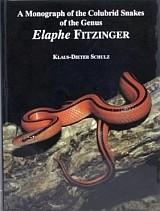

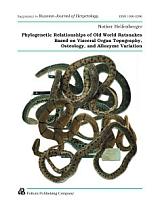

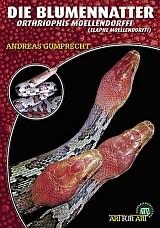

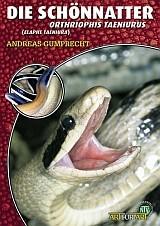

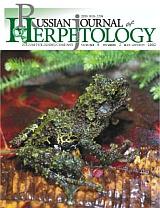

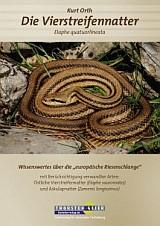

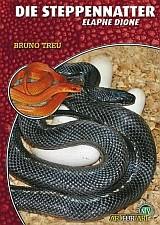

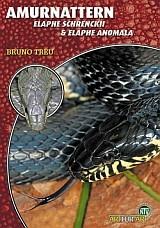

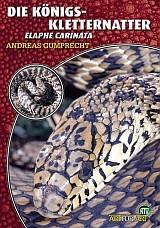






















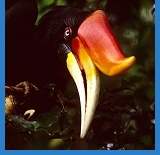











































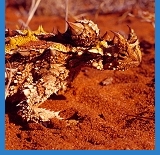








































































































|

